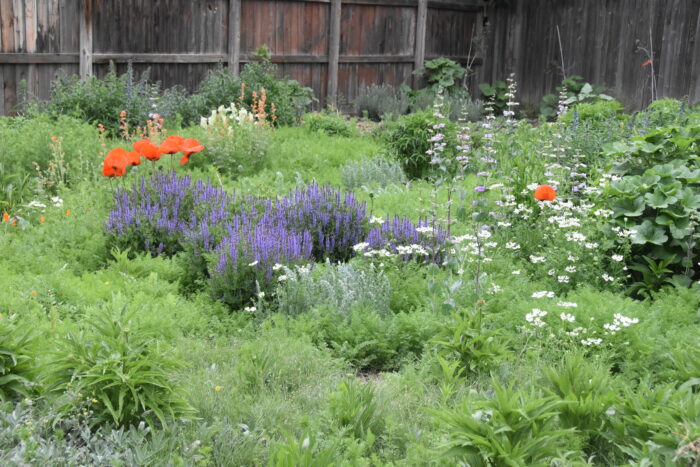
There is no perfect garden plant, unless one is talking about plastic. All chlorophyll-loaded garden accents have both good and bad visual and cultural attributes. Understanding the weaknesses of your garden’s plant material presents an opportunity for you to use one plant to complement another while hiding visual weak points.
In my home meadow, for example, I know that while ‘Blue Hill’ meadow sage (Salvia × sylvestris ‘Blue Hill’, Zones 4–9) may bloom for months, my favorite orange oriental poppies (Papaver orientale, Zones 3–7) will rapture themselves into a crispy mess of ragged brown leaves by mid-July. So I plant the poppies between a grouping of the sage and a cluster of warm-season grasses (photo above). This way the grass will complement the still-blooming meadow sage as the poppy bloom slows down but will also, as it rises skyward with aspirations of its own, help to hide the poppies’ spent foliage. Read on to find a few other winning plant combinations suitable for gardeners in the Rocky Mountain region.
Winter hardy iris and rose play well
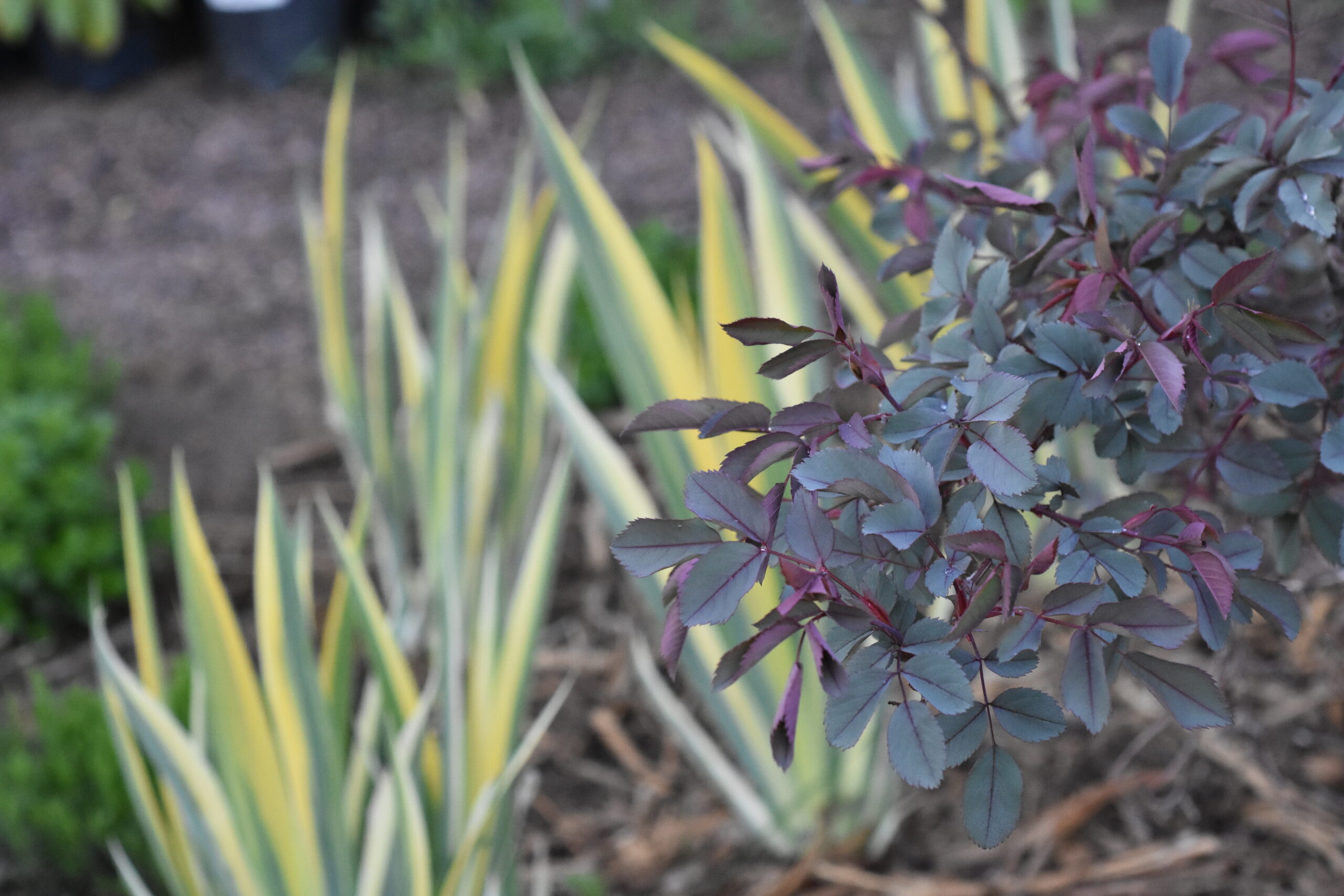
I’ve grown quite fond of the visual interplay between a band of yellow-variegated iris (Iris pallida ‘Aureovariegata’, Zones 4–9) and a dark and moody red-leaf rose (Rosa glauca, Zones 2–8) in my home garden. Exceedingly low input, I water this pairing during dry spells, remove spent iris bloom stalks in June, and cut the rose back periodically to keep its size manageable. (In a rich clay like mine red-leaf rose can grow to the size of a large shrub.) Not only does this allow the rose to act as a focal point and dark accent to the otherwise green corner of my yard, but the vertical, two-toned iris makes for a striking contrast that actually serves to hide the twiggy legs this shrubby rose is prone to. And both plants are fairly winter hardy.
Artemisia and penstemon sparkle with a pop of yellow
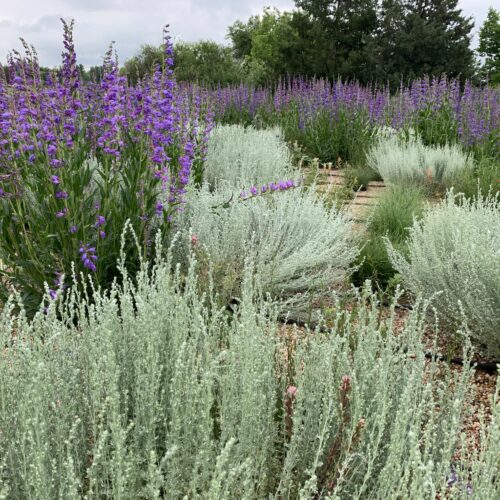 |
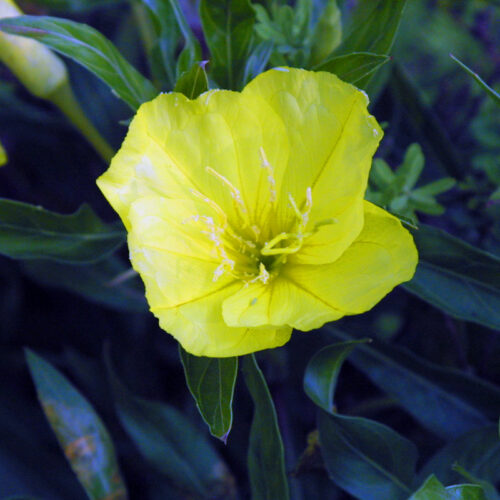 |
Just as drought tolerant, though much more petite in size (2 feet or less), fringed sage (Artemisia frigida, Zones 3–10) makes a great skirt for our native Rocky Mountain penstemon (Penstemon strictus, Zones 4–9). Both appreciate dry, lean soil and bloom in synchronization. The fine-textured silver sage hides the penstemon’s underwhelming leaves and is a great foil in color. I’ve included these two plants in several of my meadow designs, interspersing Missouri evening primrose (Oenothera macrocarpa, Zones 3–7) between them, where its large, electric yellow blooms shine through the silver haze and really make the penstemon’s purple spikes pop.
Liatris and rattlesnake master work well in windy areas
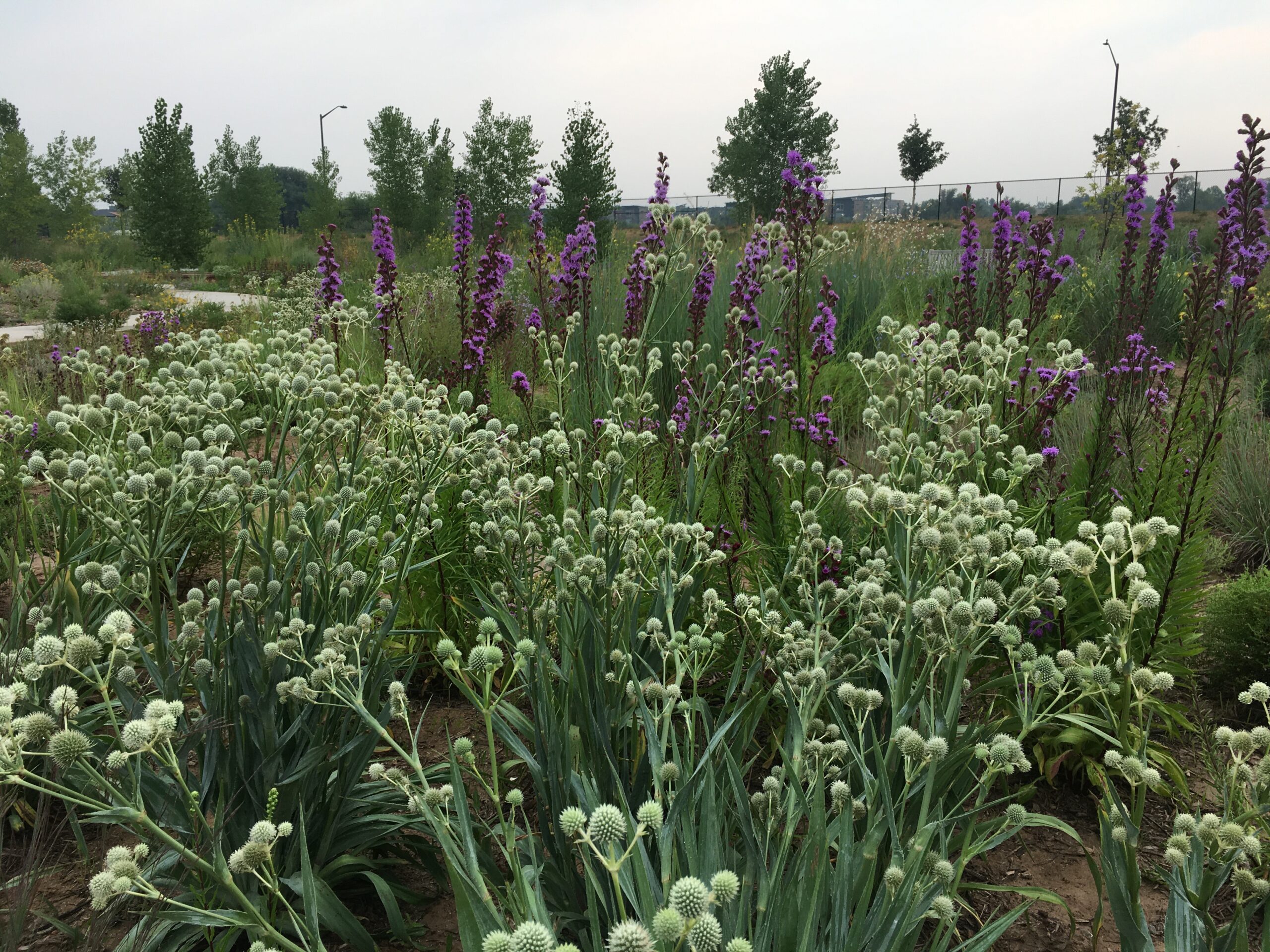
For lower elevations with longer growing seasons, consider Rocky Mountain liatris (Liatris ligulistylis, Zones 3–8) as a band or cluster behind a group of rattlesnake master (Eryngium yuccifolium, Zones 3–8). These tall (3 to 5 feet high) and narrow meadow denizens not only will help to hold each other up but will complement one another in floral form and color; the liatris features magenta spikes, while rattlesnake master produces white spheres. Add a tall warm-season grass to this combination, such as golden prairie grass (Sorghastrum nutans, Zones 4–9), to blend it into another design and to add even more support for windy areas.
Camas adds early season color
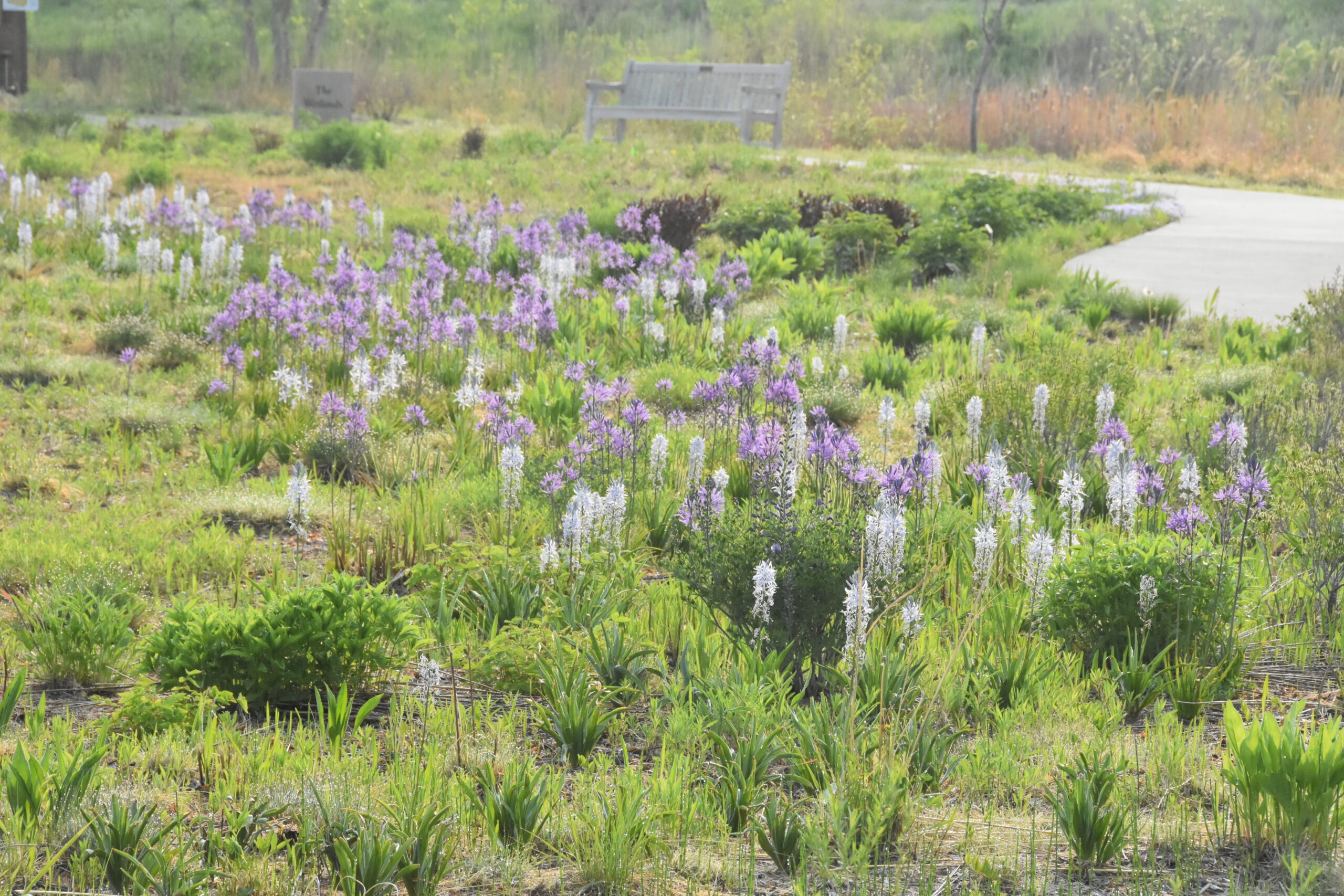
In fine-textured parts of the garden, such as grass-dominated portions (including buffalograss lawns) or sunny areas with seasonal doldrums, consider the inclusion of bulbs, corms, and tubers. (A catchall term for these is geophytes.) In moderate moisture and wetter areas needing spring color, I’ve had good success with camas (Camassia spp. and cvs., Zones 3–8). A large stand of camas remains among the only plants with early-season interest in one of my native-centric designs, bridging the garden from green-up to the first early-season perennials.
Foxtail lily brings pizzazz to drier areas of the garden
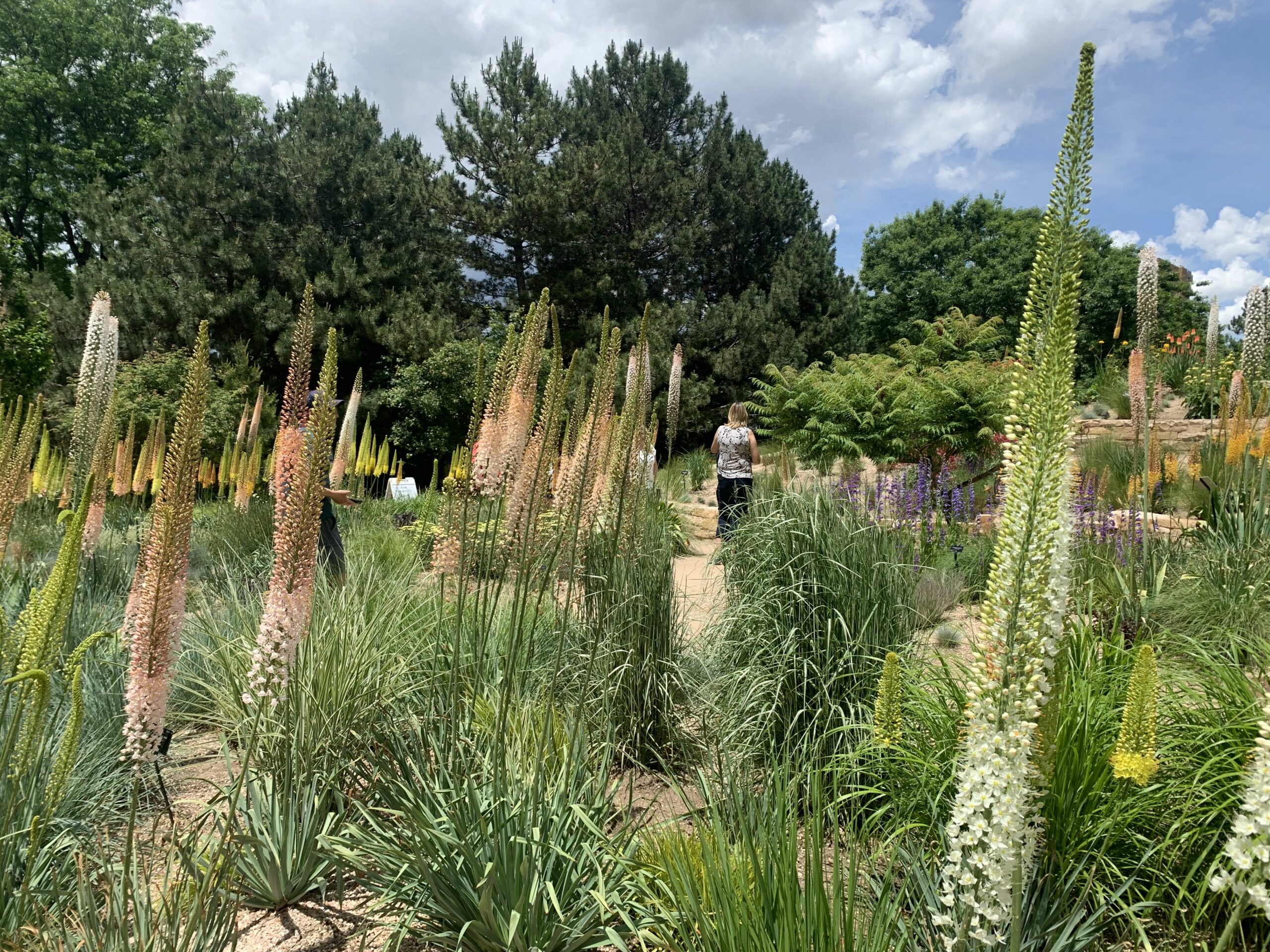
Foxtail lily (Eremurus spp. and cvs., Zones 5–8) is appropriate for drier spaces in the garden. Just remember that when working with geophytes, more is more. If you think 15 bulbs will do the job, consider 150 instead. They are cheap in bulk if purchased online and only read well in numbers much larger than what one may first expect. If planted into warm-season grasses, the slower-moving grasses will serve to help cover up the fading geophyte foliage as the season moves forward.
Focus on contrast and build on strengths
In my opinion, the best plant pairings not only share cultural preferences but feature very different plant or floral forms. It’s no mistake that I’ve planted a spikelike penstemon with a round-flowered evening primrose; it’s because the contrast in flower shape works just like the contrast in flower color to help each plant in the pairing look its best. Managing to include both contrast in flower color and shape heightens the impact of the design with no added management on behalf of the gardener. Adding a contrasting foliar texture can do the same. Since just a few effective plant combinations can heighten an entire garden design by providing thoughtful accents and bridging slow periods, managing to nail the concepts of visual contrast and cultural compatibility will quickly elevate your home designs without the need to overhaul the whole yard.
Bryan Fischer lives and gardens at the intersection of the Great Plains and the Rockies. He is a horticulturist and the curator of plant collections for a local botanic garden.


















Comments
Log in or create an account to post a comment.
Sign up Log in